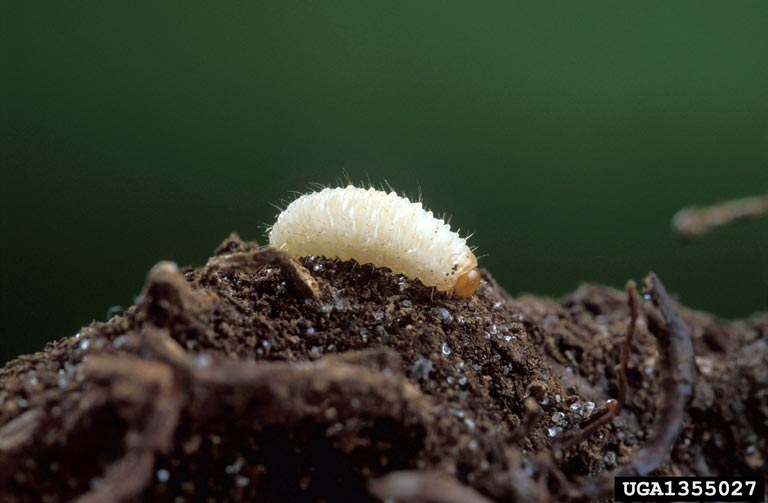Integrated Pest Management
Root Weevils
Otiorhynchus spp.
Pest Description
- adults: 1/4 – 1/2 inch; square snout; black with white/brown flecks
- larvae: up to 1/3 inch long; white grubs without legs; brown head capsule
Host Plants, Diet & Damage
- many hosts: lilac, euonymous, strawberry, broadleaved evergreens preferred
- larval feeding on host plant roots can lead to weakened plants causing dieback
- adults create unsightly marginal leaf notches
- considered a nuisance pest when entering homes
Biology, Life Cycle & Damaging Life Stage
- overwinter as nearly full-grown larvae; some as adults
- larvae resume feeding in the spring
- adults emerge around June and are active through fall
- eggs are laid in the soil around the plant base
- adults do not fly; fall to the ground when disturbed
- nocturnal feeders
- one generation per year
- larvae and adults are damaging
IPM Recommendations
- Manage trees to improve or maintain overall health.
- Monitor plants for marginal leaf notching.
- Minor damage may be tolerated.
- Apply an insecticide (pyrethroid) to foliage in the evening to control feeding adults when damage is present.
- Apply a systemic neonicitinoid as a soil drench in May or after leaves have expanded in spring.




